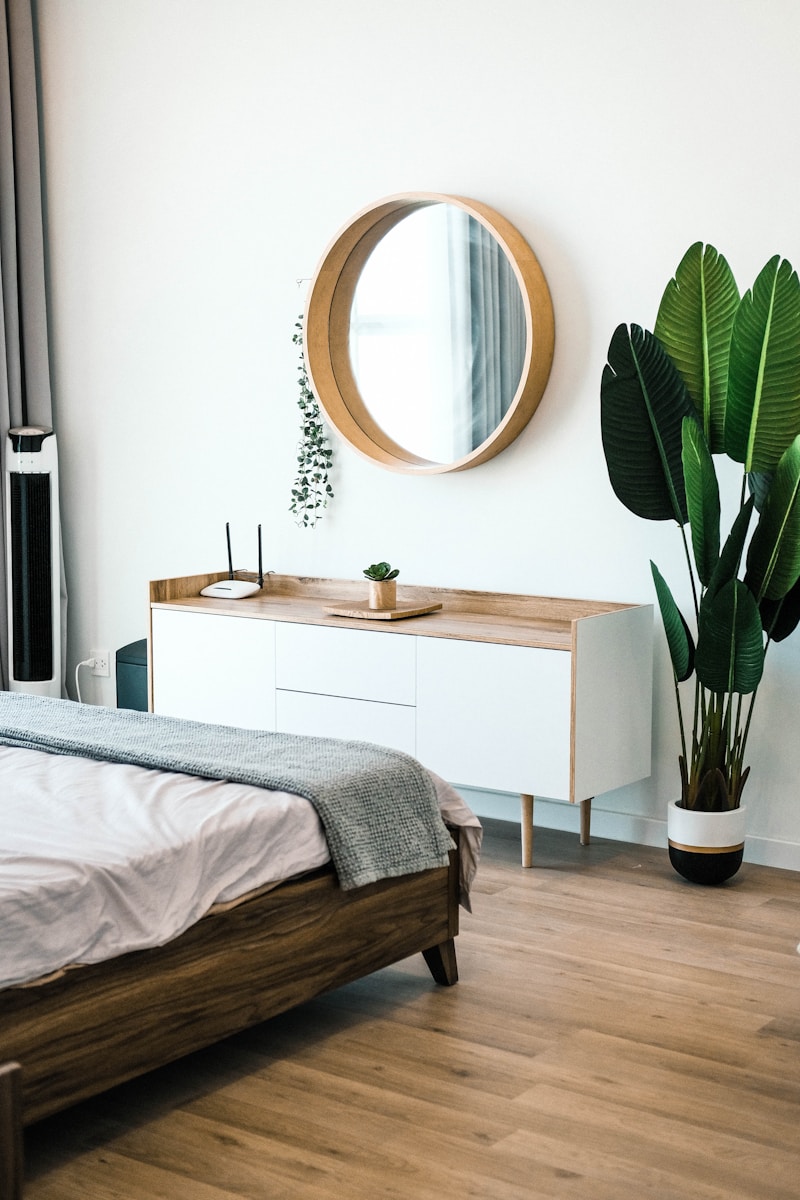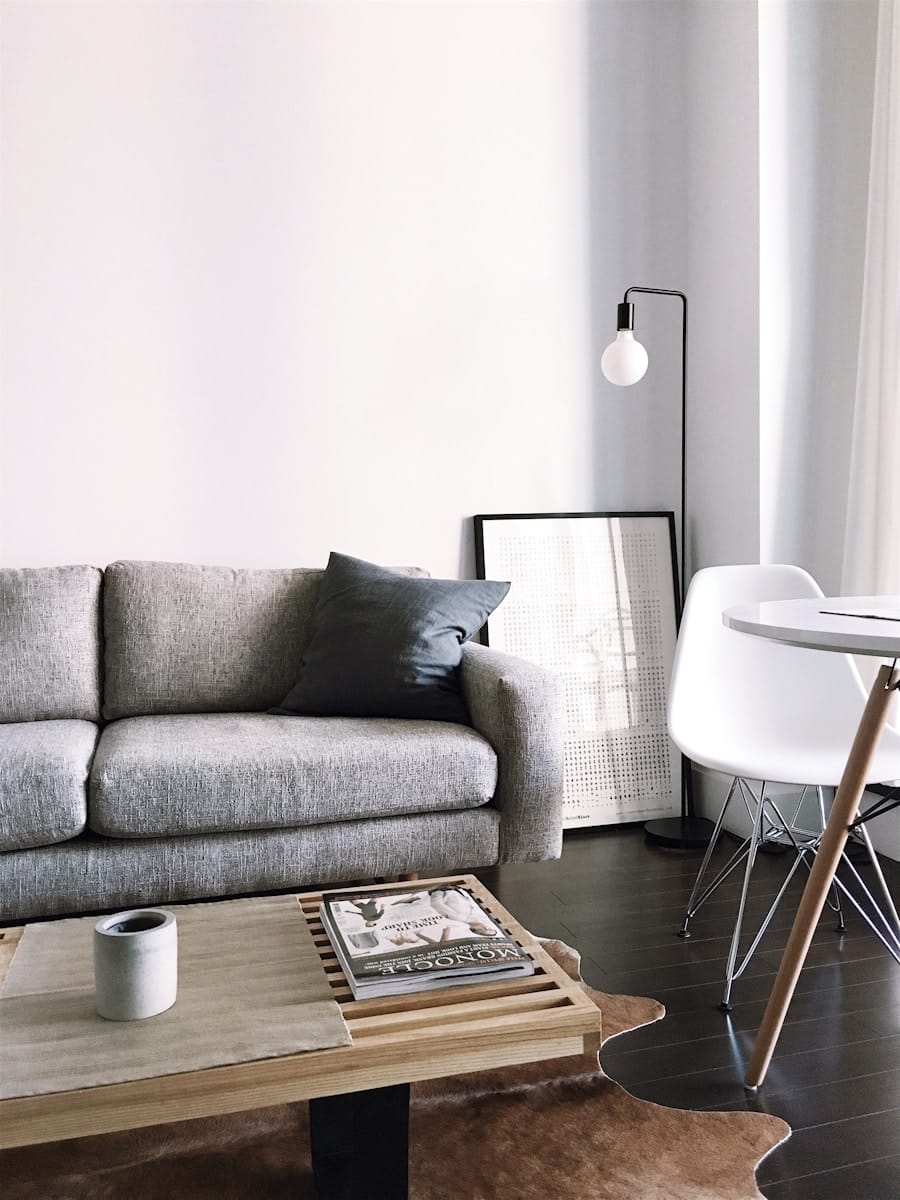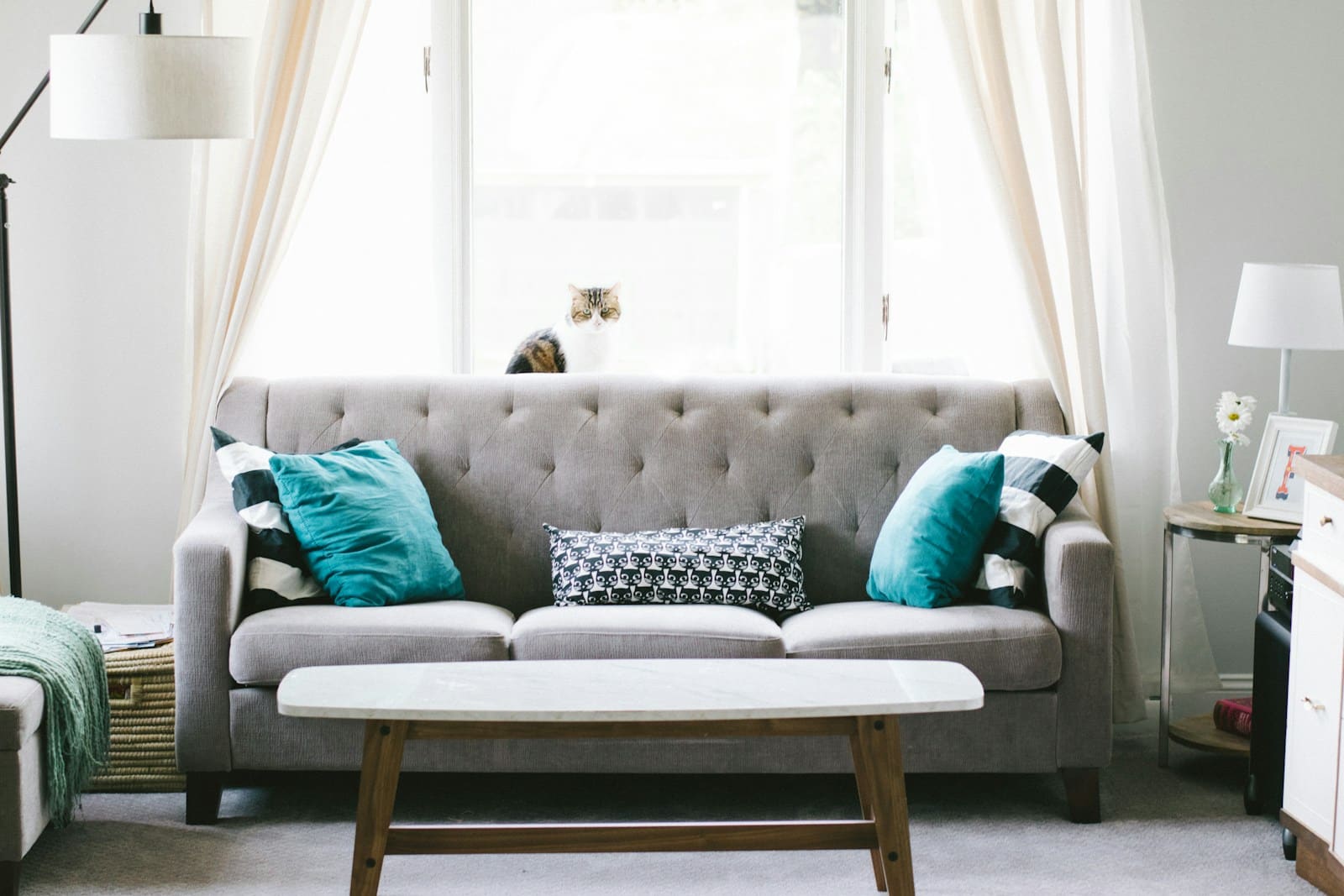Furniture and Fabrics: Crafting a Safer, Healthier Home
Rethinking Home Comfort and Health
Furniture and fabrics are the cornerstones of any home’s personality and comfort, but beneath their inviting textures and stylish exteriors often lie hidden dangers. From the flame retardants woven into upholstery to the volatile organic compounds (VOCs) that silently off-gas into the air, these unseen threats can compromise your family’s well-being.

For decades, manufacturers have relied on these chemicals to meet flammability standards and enhance durability, often at the expense of human health and indoor air quality. However, as awareness grows, so does the demand for safer, toxin-free alternatives that blend style, sustainability, and safety.
This journey is about more than choosing better materials—it’s about reclaiming your home as a sanctuary, free from pollutants that don’t belong there. Understanding the risks, recognizing better options, and making empowered decisions about the furniture and fabrics you bring into your space can transform not only how your home looks, but how it feels.
The Hidden Hazards in Everyday Décor
How Furniture and Fabrics Introduce Risks into Your Home
Furniture and fabrics often carry more than meets the eye. Beneath their appealing designs, harmful chemicals lurk, posing risks. Flame retardants, added to reduce fire hazards, are commonly found in sofas, mattresses, and curtains. These chemicals, while well-intentioned, release toxins into the air over time.
Volatile organic compounds, or VOCs, are another hidden danger in home décor. Found in adhesives, paints, and varnishes, they off-gas into your living space. This process can continue for weeks, months, or even years, creating a persistent source of indoor air pollution.
The Long-Term Impact of Toxins in Furniture and Fabrics
Exposure to flame retardants and VOCs can have profound health implications. Studies link them to respiratory problems, hormone disruption, and even cancer. Children are especially vulnerable, as their developing bodies absorb toxins more readily.
Beyond individual health, these chemicals contribute to broader environmental harm. When furniture and fabrics are discarded, toxins leach into soil and water. This pollution exacerbates climate change and threatens ecosystems.
Recognizing the Problem is the First Step
Understanding the risks tied to furniture and fabrics empowers homeowners to make safer choices. Awareness opens the door to alternatives. By rethinking your approach to décor, you can protect both your health and the planet.
Furniture and Fabrics: The Science Behind Safety
Why Flame Retardants are Common in Furniture and Fabrics
Flame retardants are chemicals added to furniture and fabrics to meet flammability standards. Their purpose is to slow fire spread. While this sounds beneficial, these substances come with a hidden cost. Over time, they break down and release toxic particles into the air.
Research shows that flame retardants can persist in household dust. This means exposure isn’t just occasional; it’s ongoing and unavoidable. These chemicals were widely adopted in the 1970s, but their risks weren’t fully understood at the time. Now, their role in furniture and fabrics is being questioned.
How VOCs Compromise the Safety of Furniture and Fabrics
VOCs, or volatile organic compounds, are organic chemicals that easily evaporate into the air. They’re commonly found in furniture finishes, adhesives, and treated fabrics. These compounds off-gas over time, releasing harmful fumes into your living space.
Exposure to VOCs from furniture and fabrics has been linked to health concerns. These include headaches, eye irritation, and respiratory problems. Prolonged exposure can increase the risk of more severe conditions, including nervous system damage and cancer. VOCs also contribute to poor indoor air quality, which affects overall comfort at home.
The Cost of Ignoring Science in Furniture and Fabrics
Failing to address the dangers of flame retardants and VOCs leads to significant health and environmental consequences. These chemicals accumulate in ecosystems, harming wildlife and contaminating water sources. Meanwhile, homeowners unknowingly continue to face risks inside their homes.
Science has shown us the problem. Fortunately, it also points to solutions. Reducing exposure to flame retardants and VOCs in furniture and fabrics is possible with informed choices and intentional living.
Shifting to Sustainable Choices Without Sacrificing Style
Reimagining Furniture and Fabrics for a Healthier Home
Furniture and fabrics can elevate your home’s aesthetics while ensuring safety. Sustainable materials offer the perfect balance of health and design. Organic cotton, linen, and untreated wool provide natural elegance without chemical treatments. These materials breathe better and contribute to a toxin-free environment.

Selecting furniture made from solid wood rather than composite materials is another thoughtful choice. Untreated or naturally finished wood eliminates VOC exposure, enhancing both air quality and durability. Incorporating these elements ensures your home remains stylish yet safe for every family member.
The Role of Natural Dyes and Finishes in Furniture and Fabrics
Synthetic dyes and finishes often introduce VOCs and other harmful substances. Furniture and fabrics treated with these materials may off-gas for years. Switching to products that use natural dyes or water-based finishes reduces chemical exposure significantly. These alternatives not only look beautiful but align with eco-conscious living.
Handcrafted furniture and fabrics often rely on traditional methods that avoid harmful chemicals. Artisanal pieces showcase timeless craftsmanship and use safer, sustainable processes. Choosing such items supports local artisans while prioritizing your family’s health.
Sustainability is a Commitment, Not a Compromise
Prioritizing sustainability doesn’t mean sacrificing design. Furniture and fabrics crafted from natural materials blend seamlessly with any aesthetic. They create spaces that reflect your personal style while fostering a healthier, more sustainable lifestyle. Making conscious decisions about your décor is an investment in your family’s future and the planet.
The VOC Dilemma: Identifying and Eliminating Chemical Culprits
Understanding How VOCs Lurk in Furniture and Fabrics
Volatile organic compounds, or VOCs, are invisible pollutants that invade your living space. Furniture and fabrics often emit these harmful chemicals. From adhesives in couches to treated upholstery, VOCs find their way into homes through everyday décor. These compounds vaporize into the air, causing exposure long after purchase.
Many VOCs stem from chemical processes that enhance durability or color. Unfortunately, these benefits come at a cost to health. VOCs in furniture and fabrics contribute to indoor air pollution, affecting breathing and overall well-being.
The Lasting Effects of VOCs in Furniture and Fabrics
Exposure to VOCs can cause both immediate and long-term health problems. Symptoms like headaches or respiratory irritation may seem minor but worsen over time. Furniture and fabrics with high VOC levels release these toxins continuously, creating a compounding effect. Prolonged exposure can lead to more serious conditions like neurological disorders or cancer.
Children and pets are especially vulnerable to VOCs in furniture and fabrics. Their smaller size and closer proximity to treated surfaces increase the risks. Indoor air often contains higher VOC concentrations than outdoor air, making the home environment critical.
Reducing VOCs for a Safer, Cleaner Space
Eliminating VOCs from furniture and fabrics starts with making informed choices. Opt for items labeled as low-VOC or VOC-free whenever possible. Look for untreated or naturally finished materials that don’t rely on harsh chemical processes. Incorporating plants known for air purification can also help reduce VOC levels.
Recognizing and avoiding VOCs in furniture and fabrics protects your family’s health and creates a more breathable, welcoming home. Small changes in your décor decisions can lead to lasting improvements in your living environment.
Navigating Certifications and Labels for Furniture and Fabrics
Why Certifications Matter When Choosing Furniture and Fabrics
Certifications are essential when selecting furniture and fabrics that prioritize health and safety. They provide assurance about product quality and chemical content. Eco-labels help identify items free from harmful substances like flame retardants and VOCs. Understanding these certifications simplifies the process of creating a safer home.
Furniture and fabrics with recognized certifications meet rigorous environmental and health standards. These standards ensure that harmful chemicals are avoided during manufacturing. Certifications also confirm that sustainable practices were used, aligning with eco-conscious values.
Decoding the Most Trusted Certifications for Furniture and Fabrics
Labels like Greenguard Gold ensure furniture and fabrics meet strict limits on chemical emissions. This certification focuses on improving indoor air quality. Products with the OEKO-TEX Standard 100 label guarantee that textiles are free from harmful substances. Such certifications provide peace of mind and reduce exposure to toxins.
GOTS-certified fabrics are made with organic materials and follow eco-friendly production methods. They avoid the use of pesticides and synthetic dyes. Similarly, the FSC certification guarantees that wood in furniture comes from responsibly managed forests. Each label highlights a commitment to safety and sustainability.
How Certification Informs Smarter Choices for Furniture and Fabrics
Certifications empower consumers to make informed choices about the furniture and fabrics they bring into their homes. They eliminate guesswork and provide transparency in an often opaque industry. Knowing which labels to trust ensures that your décor contributes to a healthier environment.
By prioritizing certified furniture and fabrics, you invest in products that enhance both personal health and the planet’s well-being. These thoughtful decisions transform your living space into a sanctuary that reflects your values.
Empowering Your Furniture and Fabrics with DIY Solutions
Taking Control of Furniture and Fabrics with DIY Methods
Furniture and fabrics don’t have to come pre-treated with chemicals. DIY solutions empower you to create toxin-free alternatives. By refurbishing furniture or sewing your own fabric pieces, you can control the materials and finishes used. This approach ensures a healthier environment without compromising style or functionality.
Using untreated, natural fabrics for upholstery allows you to avoid flame retardants and VOCs entirely. Reupholstering furniture with organic cotton or linen gives it a fresh, eco-friendly look. Similarly, selecting low-VOC paints and finishes when restoring wood pieces minimizes harmful emissions while enhancing durability and beauty.
The Benefits of Personalizing Your Furniture and Fabrics
Creating or refurbishing your furniture and fabrics allows you to express individuality. DIY solutions make each piece unique to your home. With careful material selection, these projects blend style with sustainability. Handcrafted furniture and custom-made fabrics reflect care and intention, enriching your living space with meaning.
Incorporating DIY solutions also reduces environmental impact. Upcycling old furniture prevents waste and gives pieces a new life. Choosing non-toxic finishes and treatments supports both personal health and eco-conscious values. DIY methods prioritize safety without sacrificing the creativity and charm of your décor.
How DIY Projects Enhance the Safety of Furniture and Fabrics
By eliminating commercial treatments, DIY projects provide peace of mind about the safety of furniture and fabrics. Homemade solutions avoid the risks associated with mass-produced items. Projects like sewing curtains or upholstering chairs ensure that harmful chemicals stay out of your home.
Through thoughtful DIY practices, furniture and fabrics become safer, more personal, and more sustainable. Each project represents a step toward a toxin-free, healthier living space that truly feels like home.
Partnering with Ethical Brands for a Healthier Home
Why Ethical Brands Matter in Furniture and Fabrics
Ethical brands prioritize the health of both consumers and the planet. These companies create furniture and fabrics without harmful chemicals. By choosing such brands, you support sustainable practices and reduce exposure to flame retardants and VOCs. Ethical manufacturers ensure their products meet safety and environmental standards, making your home a healthier space.

Furniture and fabrics from ethical brands often feature natural materials and eco-friendly processes. These companies focus on transparency, giving consumers confidence in their choices. Supporting ethical brands helps drive change in the industry, encouraging others to adopt safer, more sustainable practices.
Finding Trustworthy Sources for Furniture and Fabrics
Researching ethical brands allows you to make informed decisions about furniture and fabrics. Many companies provide detailed information about their sourcing and production methods. Look for those that use organic textiles, reclaimed wood, and non-toxic finishes. Trustworthy brands often display certifications that validate their commitment to health and sustainability.
Ethical furniture and fabrics not only protect your family but also contribute to environmental conservation. These products often feature designs that are as durable as they are beautiful. By investing in them, you create a home filled with pieces that align with your values.
The Long-Term Benefits of Choosing Ethical Furniture and Fabrics
Partnering with ethical brands ensures lasting quality and peace of mind. Their furniture and fabrics are crafted to minimize environmental impact and maximize safety. Over time, these choices reduce chemical exposure and promote a healthier lifestyle. They also help foster a market for safer, more conscious products.
Collaborating with ethical brands allows you to transform your home into a sanctuary of health and sustainability. Each piece of furniture and fabric tells a story of care, responsibility, and thoughtful living.
Furniture and Fabrics in Action: Transforming Real Homes
How Thoughtful Choices in Furniture and Fabrics Redefine Living Spaces
Real-world transformations show the power of mindful decisions in furniture and fabrics. Homeowners who prioritize non-toxic options create safer environments. Choosing flame-retardant-free sofas, VOC-free finishes, and organic textiles can significantly improve indoor air quality. These changes redefine comfort and health without compromising beauty.
Families often share that transitioning to safer furniture and fabrics brings noticeable improvements. Reduced allergic reactions and a fresher indoor atmosphere are common outcomes. The process may require effort, but the results offer lasting benefits for health and peace of mind.
Case Studies Highlighting the Impact of Safer Furniture and Fabrics
One family replaced their traditional couch with a non-toxic, certified organic alternative. They noticed fewer respiratory issues almost immediately. Another household transformed their bedroom by switching to VOC-free furniture and untreated fabrics. Sleep quality improved, and they felt more energized each day.
A homeowner decided to reupholster vintage chairs using natural linen. The project avoided chemical treatments and preserved the charm of the pieces. This transformation showcased how thoughtful changes to furniture and fabrics bring safety, sustainability, and unique character into a space.
Making Every Room a Testament to Conscious Living
When real people commit to safer furniture and fabrics, their homes become reflections of their values. Kitchens feel more inviting, living rooms become healthier gathering places, and bedrooms turn into sanctuaries. Each piece of furniture and fabric carries intention, enhancing both functionality and well-being.
Through real-life examples, it’s clear that furniture and fabrics hold transformative power. Prioritizing health and sustainability creates homes that feel better and inspire others to make similar changes. The shift is not just about décor; it’s about building a foundation for healthier living.
Furniture and Fabrics: Small Changes with Big Impact
Starting Your Journey Toward Safer Furniture and Fabrics
Embracing safer furniture and fabrics doesn’t require a complete home makeover. Small, intentional changes can create significant improvements. Swapping out high-VOC furnishings for low-emission options immediately enhances air quality. Introducing untreated natural fabrics, like organic cotton or wool, reduces exposure to flame retardants and chemical dyes.
Every decision, no matter how minor, contributes to a healthier living space. Replacing just one piece of furniture or adding eco-friendly curtains can make a difference. Taking gradual steps ensures the transition is manageable and impactful.
Incorporating Furniture and Fabrics that Prioritize Well-Being
Start by focusing on high-traffic areas, such as the living room or bedroom, where exposure to furniture and fabrics is highest. Opt for sustainably sourced wood tables or chairs finished with natural, low-VOC products. Choose rugs and cushions made with untreated or organic fibers to create a safe, cozy atmosphere.
As you incorporate these changes, the positive effects become evident. Rooms feel fresher, family members experience fewer allergy symptoms, and the home exudes a sense of balance. These enhancements are about more than aesthetics; they prioritize the health of everyone who enters your space.
The Ripple Effect of Choosing Safer Furniture and Fabrics
Every time you select safer furniture and fabrics, you contribute to a larger movement toward sustainability and wellness. Your purchases support ethical brands and encourage broader industry shifts. These actions inspire others to follow suit, amplifying the impact of your choices.
By committing to mindful, gradual improvements, you’re creating a home that reflects care, responsibility, and thoughtfulness. Furniture and fabrics become more than décor; they embody your values and dedication to a healthier way of life.
